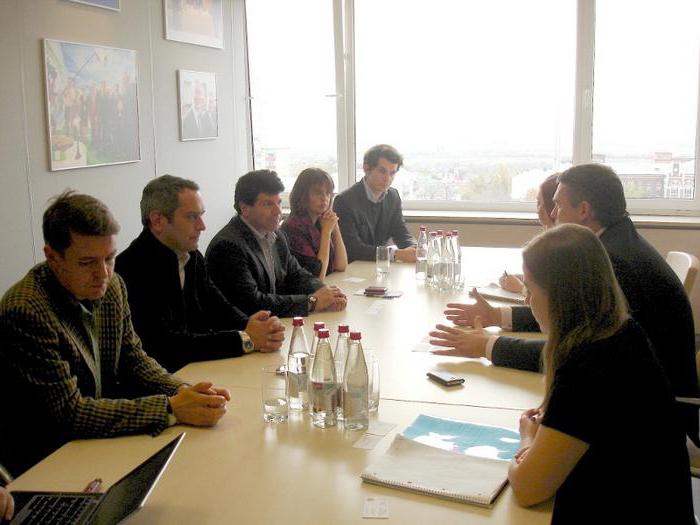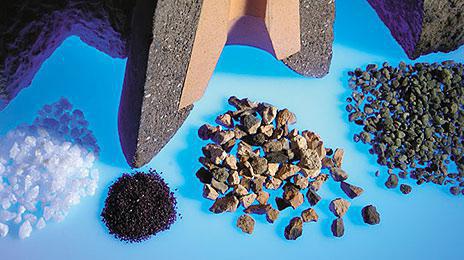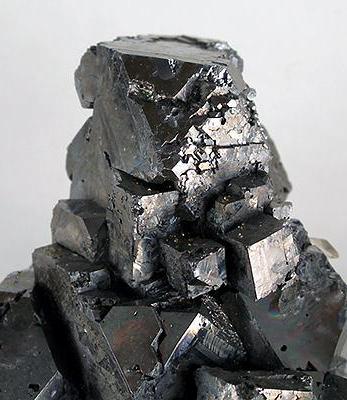Currently, minerals of the Rostov region are presented in a wide variety. Many pools have been explored and successfully operated here. Anthracite is mined in this region. In Russia and in the world this is the only place where this high-calorie mineral is extracted. The area of promising land is more than 46 thousand square meters. km In total, the region has about 30 sites subject to geological exploration. Let us consider in more detail the minerals of the Rostov region.
General information
In the region, discovered and extracted from the bowels:
- Limestones (flux and converter).
- Construction Materials.
- Refractory and refractory clay.
- Water. In the region, at depths of up to 300 m, underground mineral healing and drinking waters occur.
- Molding sands.
Over the past few years, deposits of unconventional types of minerals have been discovered. For example, glauconites, concrete stones, and siliceous rocks have been discovered and are being developed. All of them have a multi-purpose purpose. They are used as mineral fertilizers, natural improvers, natural sorbents. However, it should be noted that these deposits are not developed on an industrial scale. Actively mined in the region and cement raw materials.
Hydrocarbons
Gas and gas condensate fields are intensively developed in the region. A total of 20 hydrocarbon pools have been identified. Among them, except gas and gas condensate, one oil and one oil and gas condensate. Eastern Donbass is considered one of the oldest and largest mining areas. Coal reserves amount to more than 24 billion tons. Of these, 27% (over 6.5 billion tons) are explored, 12% (about 3 billion tons) tentatively estimated, and 61% (over 14.5 billion tons) are forecasted. Currently, ten promising areas have been identified where new mines can be equipped. The Rostov region is expected to produce an additional 545 million tons of coal. The volume of resources suitable for mining is about 270 million tons. The total fund, thus, reaches 815 million tons. In accordance with geological and structural features, nine large areas are distinguished in the East Donbass: Kamensko-Gundorovsky, Gukovo-Zverevsky, Krasnodonetsk, Belokalitvinsky, Shakhtinsko-Nesvetaevsky, Tatsinsky, Zadonsky, Sulino-Sadkinsky and Millerovsky districts.

Unique mineral
As mentioned above, high-calorie coal is mined in the region. Its share is 90% of the total. According to the degree of metamorphism, it is classified as superantracytes. This indicates the presence of such important consumer properties as high calorie content and density. The specific heat of its combustion is 33-34 MJ / kg. Its density reaches 1.76 g / m 3 . This is 20-30% higher than for conventional coals. The composition of the mineral is vitrinite. The microhardness of vitrinite in 5-8 p. higher than other components. With 5-12% of maternal ash and good enrichment, low-ash varieties of anthracite can be obtained.
Processed products
Various materials can be obtained from anthracite, which are in great demand in the market. Among them:
- Silicon carbide.
- Graphite.
- Hydro and thermal anthracites.
- Sorbents.
- Carbon additives for the manufacture of steel.
- Ferroalloys.
- Sulfonated coal.
In addition, methane and other harmful gases are practically not found in Don Anthracite. This allows you to classify it as unique.
Coking minerals
They are also of great value. The share of coking coal reaches 5% of the total balance reserve in the region. Mineral brands OS, KZh. K, F, KO, G are concentrated in the Tatsinsky, Belokalitvinsky, Kamensko-Gundorovsky basins. Their volume is in the range of 135 million tons. Today, mining is carried out only from one, the "Western" mine. Rostov region is actively explored by geologists. There are explored sites. The following mineral areas of the Rostov Region are considered the most attractive in economic terms:
- Boguraevsky-Deep.
- Bystryansky.
- Millstone.
- Miner West.
- Mikhailovsky.
Industrial coal reserves are in the range of 16 million tons.
Fuel and energy complex
The operation of the fuel and energy complex is carried out at the expense of the extracted fuel resources. Natural gas is considered one of the key. It comes mainly from trunk pipelines that cross the territory of the region from the eastern parts of the country. Today, proven gas reserves amount to more than 36 billion m 3 . The volume of previously estimated resources is in the range of 33 billion m 3 . For oil, these figures are respectively 3.3 and 2.26 million tons. The exploration of the total hydrocarbon resources is 3.4% for oil and 20.2% for gas. This indicates a high potential of the region in terms of production. Hydrocarbon areas of the Rostov region began to be developed on an industrial scale in 1968. Of the 20 pools, today mining is carried out in eight:
- Azov.
- Leonovsky.
- Dubovsky.
- Markovsky.
- Plotinsky.
- Kruzhilovsky.
- Sinyavsky.
- Patronovsky.
The plans of mining companies include the opening and development of new sites. However, this will require significant investment.
Building materials
The main area of their production is the Millerovsky district. In the region there are inexhaustible resources for the manufacture of building mixtures. The Rogalikskoye field has about 12 billion tons of deposits. Unique materials are concentrated in the southern part of the pool. About 20 million tons contains more than 50% of the calcareous component. Its presence allows the production of mixtures of the highest grades "A" and "B". In the useful stratum, chalk and limestone are present. Their thickness is 16–20 m. They lie in layers above the groundwater level. Overburden minerals of the Rostov region are represented by loam. Their thickness is about 10 m. In addition, sands are also present in the bowels. Loam can be used as a clay additive in clinker in the manufacture of building mixtures. Tarasovsky district of the Rostov region is considered the second in terms of volume of construction breeds. Cleaner materials are present here. They are used in the manufacture of the highest grades of cement, fillers, paints and varnishes.

Zhirnovsky quarry
It is located in the Tatsin district. In Zhirnovsky career non-metallic materials are concentrated. The volume of limestone is up to 200 million tons. This material is used in the metallurgical industry. In addition, it is used in the manufacture of fluxes for blast furnace and steelmaking. According to the results of exploration activities, about 65-70% of deposits are suitable for the converter industry. They are represented by the brands C-2 and C-1. About 5-7% can be used with the open-hearth method of steelmaking. They are represented by the M-2 brand. About 1-2% of limestones can be used in blast furnace production. The rocks of the Zhirnovsky quarry, based on a comprehensive analysis, are suitable for the manufacture of soda ash, calcium nitrate, calcium carbide, and use in the sugar industry (for selective extraction of the first grade). They can be used for mineral dressing, the production of Portland cement, gravel for a variety of construction works.
Quartzite
These minerals of the Rostov region are represented by "drain" (quartzite) sandstones. They are of sedimentary origin. They lie in the thickness of sand and sandstones of lower density, related to the Buchak Formation of the Eocene, in the form of fragmented lenses. The depth of their location varies from 0.5 to 20-30 m. Quaternary clay and loam, Kiev clay, including concrete, Buchak sandstones and sands that lie above the quartzite roof, as well as rocks present in the productive mass are considered overburden. Directly in areas of industrial value, the thickness of the layers is not more than 10-15 m. As a material for metallurgy, quartzites can be used in ferroalloys and in the production of phosphorus. Individual rocks with a high concentration of silica can be used in the manufacture of crystalline silicon. Quartzites are suitable for the production of crushed stone. Tarasovsky district of the Rostov region includes 17 sites of occurrence of the rock. There are three deposits in the Meshkovsky basin. They are located in the Verkhnedonsky district in the river basin. Quiet. This field has not been exploited and is available for open pit mining.

Refractory and refractory clay
Their deposits are distributed in the center of the region within the boundaries of the open Donbass. Clays belong to the Sulin layers of the Pliocene. They are presented in the form of viscous finely dispersed plastic rocks of various colors (pink, purple, gray with a greenish or bluish tint, yellow, white, and so on). The thickness of the layers is in the range of 9-22 m. The total clay reserve in the region is about 16 million tons. Of these, 75% is found on the Vladimirovsky site. Industrial enterprises in the region as a whole do not lack raw materials. However, at the same time, there is a shortage of high-quality clay for the manufacture of earthenware at the Semikarakorsky enterprise "Aksinya". Presumably reserves of this breed are present in the Konstantinovsky district. Here, in the long term, the start of exploration activities is expected. Clays from exploited deposits are used in the production of coarse ceramics (refractory bricks, external cladding tiles, ceramic pipes). The enclosing differences are a conditioning material for mortars. Refractory rocks act as raw materials for the production of electrical and household porcelain, internal facing tiles.
Concrete clay
They lie in the Tarasovsky district. A large basin was discovered here, in which the clay volume is in the range of 70 million tons. This rock has a number of specific properties. Concrete clays are characterized by high catalytic and sorption activity, binding ability. Due to these properties, they are quite widespread in various industries. For example, in agriculture, concrete clays are used to improve the quality of light soil, as a biostimulant for crop growth and increase cereal productivity. Concrete is included in the diet of farm animals. When it is added, the quality of sheep wool increases, an increase of 8-20% in milk yield is observed, and the milk fat content is increased. Concrete is also effective as an adsorbent when cleaning wines and refining vegetable oil. In industry, the breed is used in the production of drainage pipes, tiles, tiles, expanded clay, high-quality bricks. It is used in the preparation of drilling fluids, in foundry, for pelletizing ores on the lines of mining and processing plants. Concrete acts as a filter material in the purification of drinking water from phenols, nitrates, radioactive substances, heavy metals and other harmful components.

Siliceous rocks
They have been studied in terms of suitability as a building material. Recently, silicon rocks are being investigated as a possible source of sorbents. Further scientific and exploration work, as well as priority industrial development, is expected at four deposits: on Malchevsky - diatomites, on Sepan-Rainsky - flask, on Uspensky - tripoli, on Kamenolomensky South - opoka clay. These sites are characterized by very favorable geological, economic and geotechnical conditions, high quality material, as well as quantitative indicators. Deposits are located near settlements, roads and railways.
Directions of use
Foreign and domestic experience, in addition to the construction industry, allows the use of siliceous rocks in:
- Purification of municipal and industrial effluents, industrial oils, beer, syrups, etc.
- Ecological rehabilitation of areas with high technogenic load.
- Drying and purification of air, oil products, industrial and natural gases from carbon oxides and sulfur.
- The manufacture of cardboard for the transport and storage of fruits and vegetables.
Iron ore
Its deposits were discovered in the western part of the region, in the Matveevo-Kurgan region. The depth is 480 m. Iron ores belong to the Precambrian age and are similar to the reserves in Krivoy Rog and in the Kursk magnetic anomaly. The rocks are represented by hematite-martite quartzites and amphibole-magnetite schists and quartzites. The concentration of iron oxides in ores varies from 37 to 55%. An approximate estimate of the volume of rock with a total thickness of horizons of 60 m and an area of 20 square meters. km It is about 3.6 billion tons.
Noble metals
They are associated with conglomerates, whose thickness is up to 600 m. They belong to the Precambrian age and are distributed at a depth of 350 and more meters. Noble metals are also associated with areas of andesitic magmatism of the Donbass. In addition, gold is found in a single amount in glauconite sands belonging to the Kharkov Paleogene Suite in the northern parts of the region. The metal in the conglomerates is represented by small fractions (0.02-0.2 mm), the content of which is not more than 2.4 g / t. In the Oktyabrsky district, a manifestation of gold was also revealed. Here it is represented by vertically falling veins. They are associated with rock change sites in the area of intrusive bodies. Areas of adjacent quartz-carbonate veins with a high metal content are distinguished as ore. Their manifestation is noted at a depth of 70 m. Here, according to the results of prospecting, the total stock is small. However, given the shallow depth and scarcity of the fossil, these sites may be of practical interest.
Mercury
In the Rostov region, its deposits are considered promising. Within the boundaries of the main anticline in the Donbass, four sites with a high concentration of mercury were identified. The most promising is the Kadamovsky district. In addition, several areas with visible mineralization, which is represented by mercury-bearing rocks, have been identified in the Northern Anticline.
Titanium zirconium placers
In Chertkovsky and Millerovsky districts, a geological search was conducted on an area of about 2 thousand square meters. km About 12 ore occurrences were identified here. The largest area is considered to be the industrial content of the material and favorable conditions for mining. The concentration of ilmenite and rutile here is about 10%, zircon - up to 5%. In addition, a high presence of zircon and monazite (up to 20 and 2-10%, respectively) was found in the carbonic sandstones that are detected in the Kundryuche river basin. This ore occurrence is associated with an ancient placer.
Nickel
At a depth of 200-400 m in the Upper Don region, a series of intrusions are found that are confined to the deep fault section. Of the 6 areas, searches were carried out on one. Here, the Pionerskoye ore mine was discovered containing nickel ores of liquation type. Predicted resources are estimated at 17 thousand tons. Due to the fact that segregation ores act as the main source of nickel and other related elements (platinum, copper and others), search activities at other intrusions can be of practical interest.
Diamonds
In the Upper Don region there is a wide development of volcanism related to the Devonian period. Similar formations are present in the Voronezh region., Where there were diamond findings. This indicates the prospect of exploration activities in the Rostov region. In the west of the region, in the Matveevo-Kurgan, Neklinovsky and Kuibyshevsky areas, diamonds were found in a single amount. Of practical interest is the area similar in structure to the terrain near the river. Kalmius. Promising in this regard is the Deminsky district, which is located near the village. Lysogorka. Small intrusions, presumably having a kimberlite composition, were found in this area.